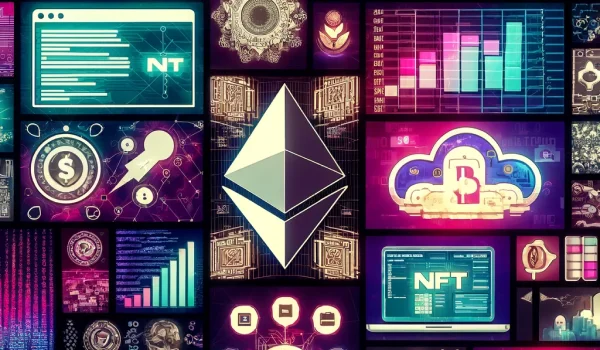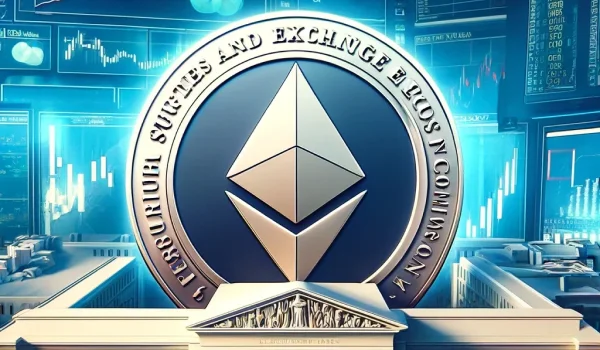Discover how to effectively use OpenSea, the top NFT marketplace, in this comprehensive guide. Learn how to create an account, buy, sell, and trade NFTs, manage transaction options, and navigate gas fees.
What is OpenSea?
OpenSea takes pride in being the first and largest NFT platform to provide critical NFT services. There was no platform for customers to readily trade different NFTs prior to its creation in 2017. OpenSea was developed to allow users to exchange crypto collectibles and other NFTs with one another.
How to Use OpenSea?
OpenSea has an intuitive and user-friendly user interface that makes it simple to use and navigate. To begin, link a crypto wallet to OpenSea in order to conduct a transaction. Your wallet is how you connect with the blockchain to send or receive payments. Because OpenSea is noncustodial, when you connect your wallet to the platform, your NFTs are delivered to your wallet address rather than being held on the platform.
OpenSea supports these types of crypto wallets: MetaMask, Phantom, Glow, Torus,Coinbase Wallet (WalletLink), Trust Wallet, Authereum, Portis,Kaikas 5,Venly, Dapper, Fortmatic/Magic, Bitski, Opera, Touch (mobile only).
How Does Opensea Work?
OpenSea is a decentralized marketplace that enables buying, selling, and trading of NFTs using smart contracts. These smart contracts ensure transparency and prevent cheating, while allowing creators to set their own prices. OpenSea utilizes the ERC-721 and ERC-1155 Ethereum standards to verify ownership of digital collectibles.
Transactions are conducted directly on the Ethereum network between buyers and sellers. To address high transaction fees on Ethereum, OpenSea has integrated with the Polygon blockchain for faster and more affordable transactions. You can find more information about Ethereum gas fees and their impact on transactions.
How to Buy NFT on OpenSea?
To purchase NFTs on OpenSea, deposit Ethereum (ETH) into your wallet and convert to wrapped ETH (WETH), an Ethereum token with greater interoperability. Most NFTs accept ETH and WETH, but some also accept DAI, APE, ASH, CUBE, BAT, and GALA.
If you're interested in buying an NFT on OpenSea, follow these steps:
-
Use the search bar and filters to find the NFT you want to purchase. You can narrow down your search by using various filters such as category, price, and collection.
-
Once you've found the NFT you're interested in, you have two options:
- "Buy Now": If the NFT is listed with a fixed price, you can click on the "Buy Now" tab and follow the prompts to complete the purchase at the listed price.
- "Make Offer": If the NFT has a "Make Offer" option, you can propose your preferred price by clicking on the "Make Offer" tab and entering the amount you're willing to pay.
-
After selecting your preferred buying option, you'll be directed to a page to sign the transaction and complete your payment using a compatible cryptocurrency wallet.
-
If you make an offer, you'll need to wait for the seller to accept or reject it. If your offer is accepted, the NFT will be transferred to your wallet.
-
Once the transaction is completed successfully, you can view the NFT in the "My Collections" tab of your profile on OpenSea.
It's important to note that OpenSea is a decentralized marketplace, and transactions are conducted using smart contracts on the blockchain. Be sure to carefully review the details of the NFT, including its ownership and authenticity, before making a purchase. Also, be mindful of transaction fees and gas prices associated with blockchain transactions.
How to Create NFTs on OpenSea?
Creating NFTs on OpenSea is a straightforward process. Here's a step-by-step guide:
-
Sign up or log in: If you don't already have an account on OpenSea, you'll need to sign up for one. If you have an account, log in to your existing account.
-
Connect your wallet: OpenSea supports various compatible cryptocurrency wallets such as MetaMask, WalletConnect, and Coinbase Wallet. Connect your preferred wallet to OpenSea to create and manage your NFTs.
-
Go to "Create" tab: Once you're logged in and your wallet is connected, click on the "Create" tab on the top right-hand corner of the OpenSea website to start the NFT creation process.
-
Choose the NFT type: OpenSea allows you to create different types of NFTs, such as art, music, collectibles, virtual lands, and more. Select the type of NFT you want to create.
-
Upload your NFT: Follow the prompts to upload your digital asset that you want to tokenize as an NFT. This could be an image, video, audio, or any other digital file depending on the type of NFT you're creating.
-
Set properties: Set properties for your NFT, such as name, description, royalties, and supply. You can also add additional attributes or metadata to make your NFT more unique and valuable.
-
Review and confirm: Review all the details of your NFT creation, including fees, before confirming the creation.
-
Pay fees and mint: Pay the applicable fees, such as gas fees, for the creation and minting of your NFT. Once the transaction is confirmed, your NFT will be minted and listed on OpenSea.
-
Manage your NFTs: You can manage and track your created NFTs in the "My Collections" tab of your profile on OpenSea. You can also set prices, royalties, and other properties for your NFTs, as well as sell or trade them on the OpenSea marketplace.
It's important to note that the process and fees associated with creating NFTs on OpenSea may vary depending on the blockchain and wallet you're using. Be sure to carefully review the terms, conditions, and fees before proceeding with NFT creation on OpenSea.
FAST FACT
The Ethereum blockchain is the default on OpenSea, however you can choose to mint your NFT on another blockchain. Once you've completed customizing your NFTs, click "Create" and your collection is ready to sell.
How to Sell NFTs on OpenSea?
Selling NFTs on OpenSea is a simple process. Here's a step-by-step guide:
-
Sign in: Log in to your OpenSea account if you have one. If you don't, sign up for a new account.
-
Connect your wallet: Connect your compatible cryptocurrency wallet, such as MetaMask, WalletConnect, or Coinbase Wallet, to your OpenSea account.
-
Access your NFTs: In the "My Collections" tab of your profile, you'll find all the NFTs you own. Choose the NFT you want to sell and click on it to access its details.
-
Set the price: On the NFT's details page, click on the "Sell" or "List for sale" button. Set the price you want to sell your NFT for in the cryptocurrency of your choice. You can also choose to sell your NFT as an auction or set a reserve price.
-
Confirm and sign: Review the details of your NFT listing, including any fees, and confirm the sale. Sign the transaction with your connected wallet to list your NFT for sale on OpenSea.
-
Manage your listings: You can view and manage your NFT listings in the "My Collections" tab of your profile. You can adjust prices, cancel listings, or update other details as needed.
-
Complete the sale: When a buyer purchases your NFT at the listed price or wins the auction, the sale will be completed automatically. The buyer will receive the NFT in their wallet, and you will receive the proceeds from the sale, minus any fees.
-
Withdraw funds: You can withdraw the funds from your sales by connecting your wallet to a cryptocurrency exchange or a compatible wallet that allows for withdrawals.
It's important to note that OpenSea charges fees for listing and selling NFTs, and the fees may vary depending on the type of NFT and the blockchain used. Be sure to review and understand the fees before listing and selling NFTs on OpenSea.
Best Practices for Securing Your NFTs on OpenSea!
Storing NFTs securely on OpenSea involves taking certain steps to protect your digital assets. Here's a guide on how to store NFTs securely:
-
Use a compatible wallet: Connect your OpenSea account to a compatible cryptocurrency wallet, such as MetaMask, WalletConnect, or Coinbase Wallet. These wallets allow you to securely manage and store your NFTs.
-
Enable two-factor authentication (2FA): Enable 2FA on both your OpenSea account and your connected wallet for an additional layer of security. This typically involves setting up an authenticator app or receiving verification codes via email or SMS.
-
Keep your wallet private key secure: Your wallet private key is like the key to your NFTs. Keep it secure and do not share it with anyone. Avoid storing it on online devices or cloud services, and consider using hardware wallets for added security.
-
Be cautious of phishing attempts: Beware of phishing attempts, which are fraudulent attempts to gain access to your wallet or OpenSea account. Do not click on suspicious links or share your private information with unknown sources.
-
Regularly update your wallet software: Keep your wallet software up-to-date with the latest security patches and updates. This helps to protect against known vulnerabilities and ensures that your NFTs are stored securely.
-
Back up your wallet: Make regular backups of your wallet's private key and store them securely in multiple offline locations. This ensures that you can recover your NFTs in case of loss or theft of your wallet.
-
Use cold storage for long-term storage: Consider using cold storage, which involves storing your NFTs offline, in a hardware wallet or a paper wallet, for long-term storage. This protects your NFTs from online threats and hacks.
By following these best practices, you can help ensure the secure storage of your NFTs on OpenSea and protect your digital assets from unauthorized access or loss.
Understanding OpenSea's Pricing and Fees for NFT Transactions
OpenSea charges various fees for using its platform to buy, sell, and trade NFTs. Here's an overview of the fees associated with OpenSea:
-
Gas Fees: OpenSea operates on the Ethereum blockchain, which requires users to pay gas fees for each transaction. Gas fees are the transaction fees required to process transactions on the Ethereum network and can vary depending on network congestion and gas prices. Gas fees are paid in Ether (ETH), the native cryptocurrency of Ethereum.
-
Transaction Fees: OpenSea charges a transaction fee on each sale made on its platform. The transaction fee is a percentage of the sale price and is deducted automatically at the time of the transaction. The exact percentage of the transaction fee may vary depending on the type of NFT and the platform's current fee structure.
-
Network Fees: OpenSea may also charge network fees for transactions that occur on layer 2 networks or other blockchains, such as the Polygon network, which OpenSea supports as an alternative to Ethereum for faster and cheaper transactions.
It's important to note that these fees are subject to change, and it's recommended to review OpenSea's fee structure and terms of service for the most up-to-date information. Additionally, it's essential to carefully consider the fees associated with using OpenSea and factor them into your decision-making when buying, selling, or trading NFTs on the platform.
Should You Use Opensea?
Certainly! OpenSea can be a valuable platform for buying, selling, and trading NFTs, depending on your individual needs and preferences. Here are some factors to consider when deciding whether to use OpenSea:
-
Wide Range of NFTs: OpenSea offers a diverse selection of NFTs, including art, music, collectibles, virtual lands, sports assets, and more. If you're interested in a variety of NFT categories, OpenSea may have the options you're looking for.
-
Decentralized and Secure: OpenSea is a decentralized, blockchain-based platform that uses smart contracts to ensure transparency and security in NFT transactions. This means that ownership of NFTs is verified on the blockchain, reducing the risk of fraud or scams.
-
User-Friendly Interface: OpenSea has a user-friendly interface that makes it easy to search, filter, and purchase NFTs. The platform also allows creators to create their own marketplaces and conduct NFT drops, making it convenient for both buyers and sellers.
-
Transaction Flexibility: OpenSea offers different transaction options, such as "Buy Now" or "Make Offer," allowing users to choose the buying or selling approach that suits them best. This flexibility can make it convenient for users to negotiate prices or propose offers.
-
Gas Fees and Transaction Costs: It's important to note that using OpenSea, like many other platforms on the Ethereum blockchain, may involve gas fees and transaction costs. These fees can vary depending on network congestion and gas prices, and they can impact the overall cost of buying, selling, or trading NFTs on OpenSea.
Ultimately, whether you should use OpenSea depends on your specific needs, risk tolerance, and comfort level with NFT transactions. It's essential to carefully consider the pros and cons and do your research before engaging in any NFT transactions on OpenSea or any other platform.


 11 mins read
11 mins read







